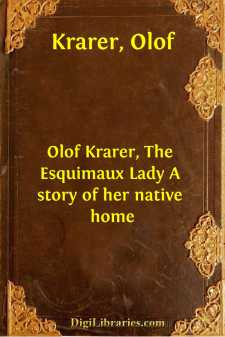Categories
- Antiques & Collectibles 13
- Architecture 36
- Art 48
- Bibles 22
- Biography & Autobiography 813
- Body, Mind & Spirit 142
- Business & Economics 28
- Children's Books 17
- Children's Fiction 14
- Computers 4
- Cooking 94
- Crafts & Hobbies 4
- Drama 346
- Education 46
- Family & Relationships 57
- Fiction 11829
- Games 19
- Gardening 17
- Health & Fitness 34
- History 1377
- House & Home 1
- Humor 147
- Juvenile Fiction 1873
- Juvenile Nonfiction 202
- Language Arts & Disciplines 88
- Law 16
- Literary Collections 686
- Literary Criticism 179
- Mathematics 13
- Medical 41
- Music 40
- Nature 179
- Non-Classifiable 1768
- Performing Arts 7
- Periodicals 1453
- Philosophy 64
- Photography 2
- Poetry 896
- Political Science 203
- Psychology 42
- Reference 154
- Religion 513
- Science 126
- Self-Help 84
- Social Science 81
- Sports & Recreation 34
- Study Aids 3
- Technology & Engineering 59
- Transportation 23
- Travel 463
- True Crime 29
Our website is made possible by displaying online advertisements to our visitors.
Please consider supporting us by disabling your ad blocker.
Olof Krarer, The Esquimaux Lady A story of her native home
by: Olof Krarer
Description:
Excerpt
INTRODUCTION.
In writing this little book, it has been our constant aim to make it, as nearly as possible, an autobiography, giving Miss Krarer's own thoughts and words, avoiding some of the little errors, caused by her imperfect knowledge of English, which are thought by some to add a certain charm to her conversation. If, near the conclusion, I may seem to have departed from this plan, it is only because she desired me to attempt the expression of her thought in more elaborate language than she can herself, at present, make use of.
She is authority for the facts, from beginning to end.
Hoping that the story of her eventful life may be as interesting to those who read, as it has already been to thousands who have heard it from her own lips; and with the heartfelt wish that it may be the means of enabling her to accomplish her cherished purpose, I am glad to have this opportunity of assisting in her work.
Albert S. Post.
I was born in Greenland, on the east coast. I am the youngest of eight children. My three sisters and four brothers are all living in Iceland. My father is living in Manitoba. My mother died in Iceland when I was sixteen years old.
We lived near the sea-shore in Greenland. Our house was built of snow. It was round, perhaps sixteen feet across, and coming to a point at the top. It was lined with fur on all sides, and was carpeted with a double thickness of fur.
The way they lined the house was to take a skin of some animal, and hold it near a fire, which was in the centre of the room. When the skin was heated through, they took it and pressed it against the wall. In a short time, it stuck to the wall so tightly that it could not be pulled off without tearing the skin.
The door was a thick curtain of fur, hung over the doorway, by heating the upper part, and letting it stick fast to the wall. Outside of the door was a long, narrow passageway, just high enough for one of us little Esquimaux people to stand up straight in. That would be about high enough for a child six years old, in this country; and it was only wide enough for one person to go through at a time. If one wanted to go out, and another wanted to go in, at the same time, one would have to back out and let the other go first. This passageway was not straight; but turned to one side, so as not to let the wind blow in.
Our fireplace was in the centre of the house. The bottom was a large, flat stone, with other stones and whalebone put about the edge to keep the fire from getting out into the room. When we wanted to build a fire, we would put some whalebone and lean meat on the stone; then a little dry moss was put in, and then my father would take a flint and a whale's tooth, or some other hard bone, and strike fire upon the moss. Sometimes he could do it easily, but sometimes it took a long while. After the fire started he would put some blubber upon it.
Although it was so very cold, we would often be without a fire, for what we made the fire of was what we had to live on, and we could not always afford to burn it....


